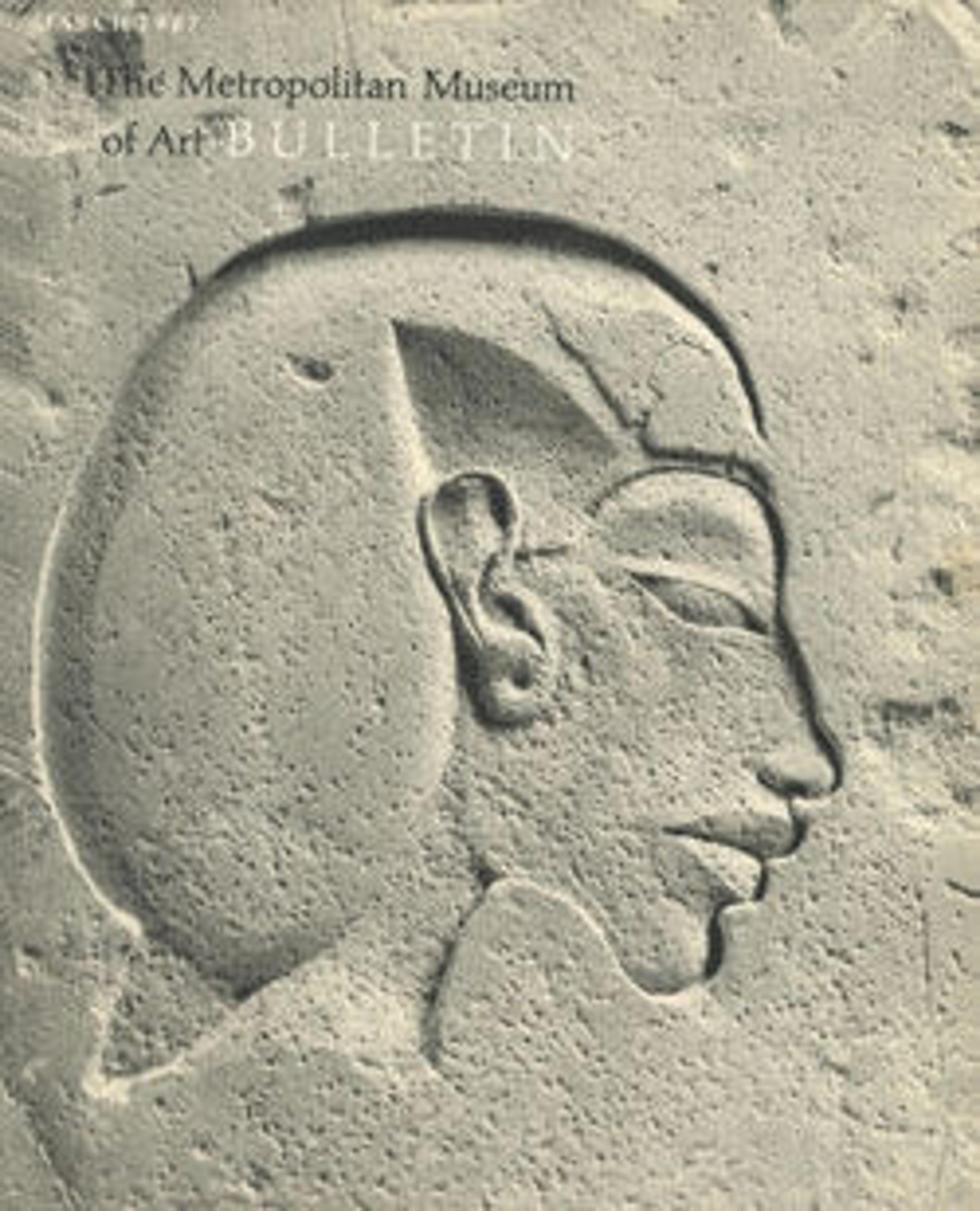Head of Amenhotep II
Amenhotep II, sixth king of Dynasty 18, was the son and coregent of Thutmose III. He was buried in Tomb 35 of the Valley of the Kings at Thebes, where his mummy was found still resting in its original sarcophagus. His principal activities as king were to preserve the hegemony over most of Nubia and the Levant that the military campaigns of Thutmose III had established.
This finely sculpted head of the king shows him wearing a nemes headcloth with a prominent uraeus on the front. The body of the snake undulates up and over the top of the nemes. The fine features of the face show a youthful king. Amenhotep became king before he was twenty and he noted his accomplishments as a hunter, charioteer, and archer on several of his monuments.
This finely sculpted head of the king shows him wearing a nemes headcloth with a prominent uraeus on the front. The body of the snake undulates up and over the top of the nemes. The fine features of the face show a youthful king. Amenhotep became king before he was twenty and he noted his accomplishments as a hunter, charioteer, and archer on several of his monuments.
Artwork Details
- Title: Head of Amenhotep II
- Period: New Kingdom
- Dynasty: Dynasty 18
- Reign: reign of Amenhotep II
- Date: ca. 1427–1400 B.C.
- Geography: From Egypt
- Medium: Granodiorite
- Dimensions: H. 17.8 cm (7 in.); W. 17 cm (6 11/16 in.); D. 14.2 cm (5 9/16 in.)
- Credit Line: Purchase, Fletcher Fund and The Guide Foundation Inc. Gift, 1966
- Object Number: 66.99.20
- Curatorial Department: Egyptian Art
More Artwork
Research Resources
The Met provides unparalleled resources for research and welcomes an international community of students and scholars. The Met's Open Access API is where creators and researchers can connect to the The Met collection. Open Access data and public domain images are available for unrestricted commercial and noncommercial use without permission or fee.
To request images under copyright and other restrictions, please use this Image Request form.
Feedback
We continue to research and examine historical and cultural context for objects in The Met collection. If you have comments or questions about this object record, please contact us using the form below. The Museum looks forward to receiving your comments.
